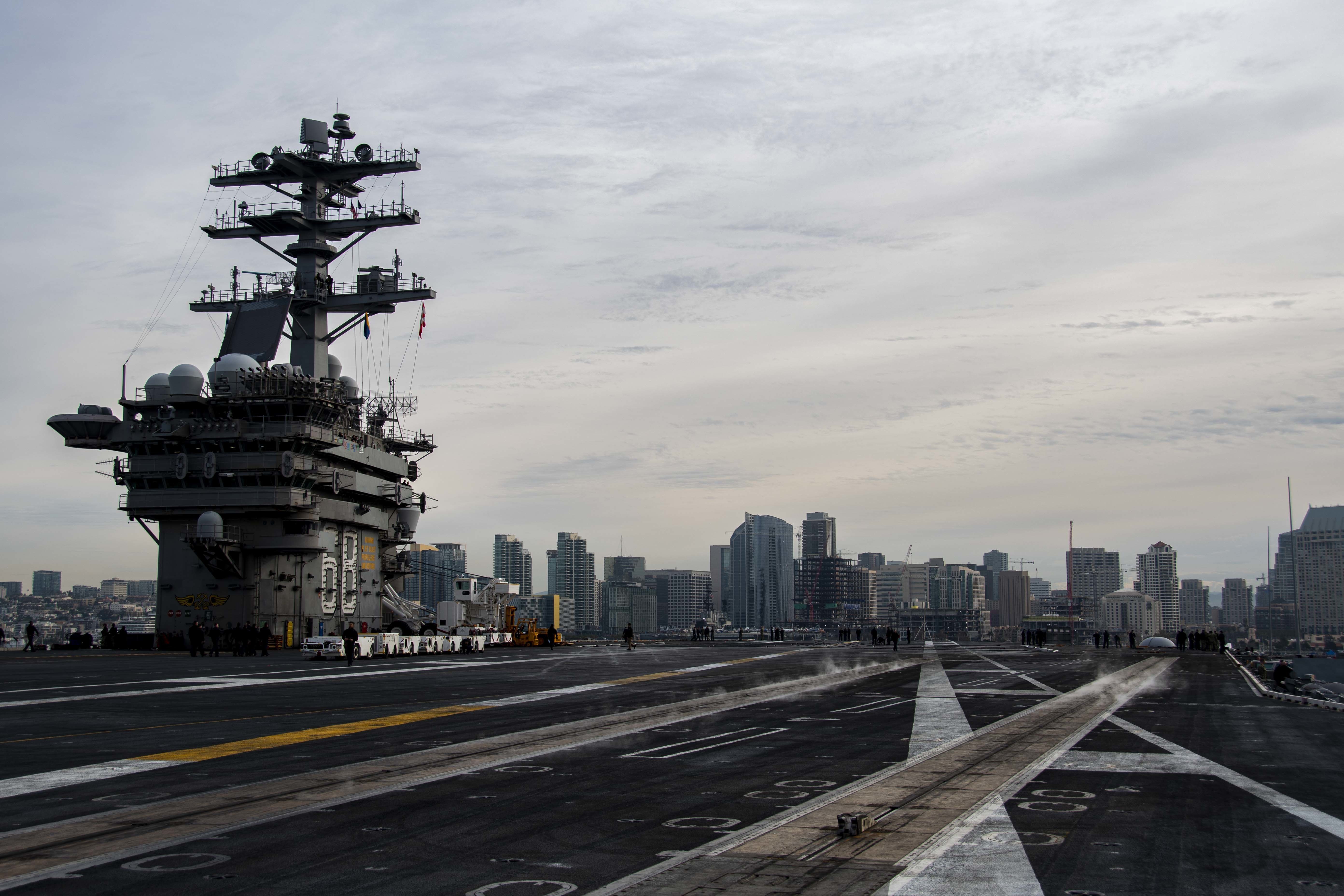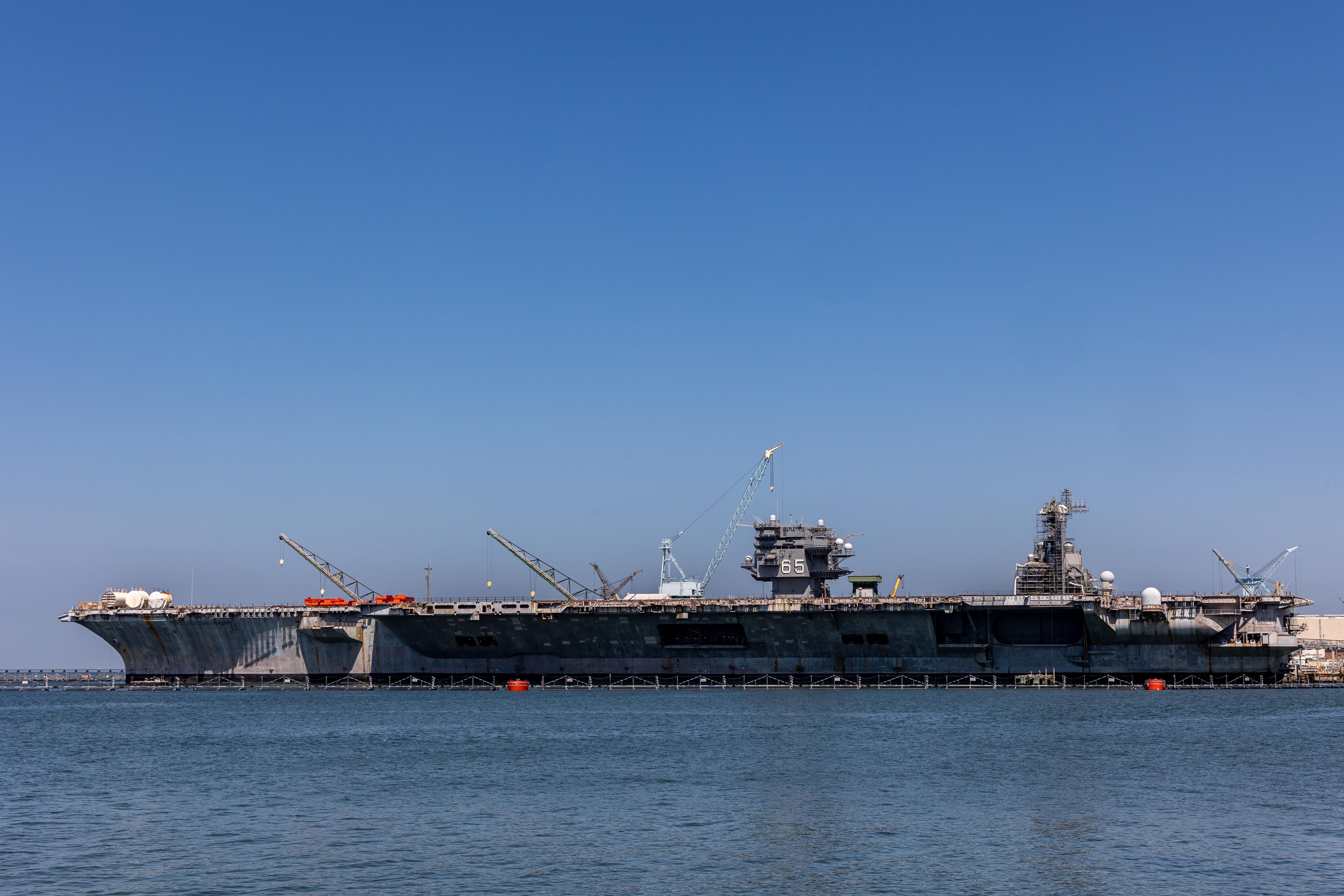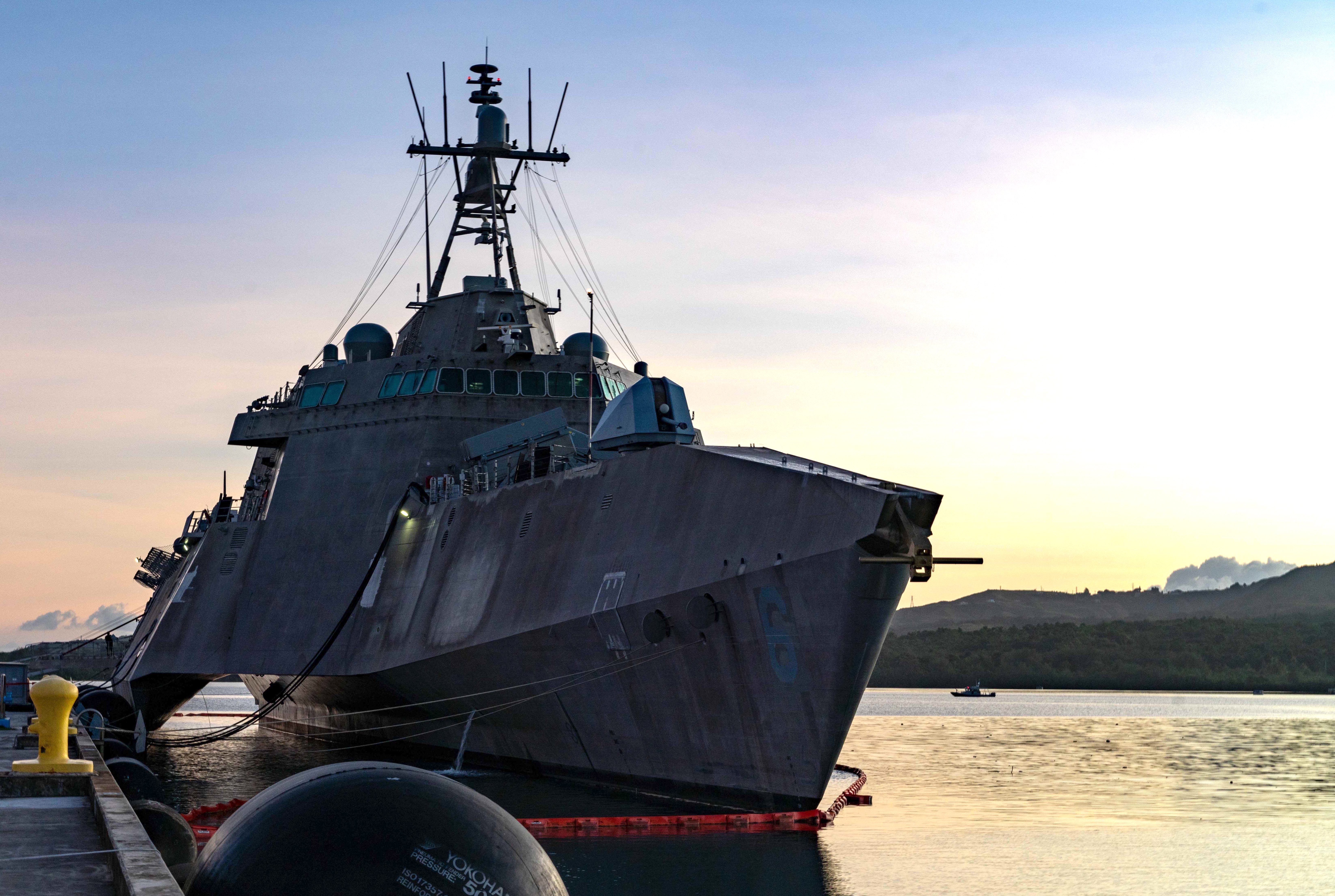
The Navy will decommission two nuclear aircraft carriers back-to-back and two Independence-class Littoral Combat Ships will go up for foreign military sale, according to the service’s latest long-range shipbuilding plan.
Following a planned 13-month service life extension, the 48-year-old USS Nimitz (CVN-68) will leave service in 2026, one year later than last year’s plan. Commissioned in 1975, Nimitz was built for a 50-year service and the extension will squeeze at least one more deployment from the first-in-class carrier.
In a Tuesday statement to USNI News, the Navy said its plan to extend Nimitz is part of a five-and-a-half-month maintenance availability that will carry the carrier into May 2026.
Download the document here.
“Expected total cost of the yard period is $200M, currently requested in the budget. Projections supporting prior budget submissions had already accounted for the cost of a shorter, 60-day avail to enable operations out to the original retirement in April 2025, so supplementing the originally scheduled yard period to the appropriately scoped length of 5-1/2 months is an additional cost to the Navy of approximately $90M for the [service life extension],” reads the statement.
Following its last deployment, Nimitz will travel to HII’s Newport News Shipbuilding to begin the deactivation process at the Virginia shipyard, Breaking Defense reported last week in a story about planning for Nimitz‘s disposal.
Nimitz‘s decommissioning will follow the former USS Enterprise (CVN-65), which was decommissioned in 2012. For the last decade, Newport News has played host to the hulk of the first U.S. nuclear aircraft carrier after it removed the cores of the ship’s eight reactors. Deactivation of the Nimitz-class carriers, which only have two reactors, will likely be an easier task.
“Enterprise and Nimitz are similar in that they are large, rugged ships containing low levels of various hazardous materials. However, they are of considerably different design, so the approach to inactivation will reflect those differences,” Jamie Koehler, a Naval Sea Systems Command spokeswoman, told Breaking Defense.

Newport News has extensive experience on the Nimitz hulls as part of the mid-life refueling and overhaul performed on the carriers.
“Our Newport News Shipbuilding team is experienced at inactivating and defueling nuclear-powered aircraft carriers. We look forward to leveraging our expertise and industrial relationships to team with the Navy on preparing for the defueling and inactivation of USS Nimitz (CVN-68),” HII spokesman Todd Corillo said in a statement to USNI News.
Nimitz will remove a year-long buffer between Nimitz and the decommissioning of carrier USS Dwight D. Eisenhower (CVN-69), according to the plan.
Without a similar service life extension, Ike will leave the fleet in 2027 and likely join Nimitz at Newport News, along with at least one, if not two carriers in overhaul and new carriers Enterprise (CVN-80) and Doris Miller (CVN-81) that are under construction at the Virginia yard.
Also in the long-range shipbuilding plan, the Navy clarified the fate of two Independence-class Littoral Combat Ships that the service wants to retire ahead of their 25-year expected service lives.
USS Jackson (LCS-6) and USS Montgomery (LCS-8), commissioned in 2015 and 2016, respectively, are now marked for foreign military sales as part of the decommissioning plan.
The Navy said that focusing the Independence-class ships on mine countermeasure missions means the service only needs 15.

“LCS 6 and LCS 8 were originally [surface warfare] designated ships; however, [the Fiscal Year 2023 budget] reset the LCS program to have only six Freedom-class LCS dedicated to [surface warfare]. Dedicating each of the classes to a specific mission set enables hull form and fleet concentration areas to align, simplify and streamline manning, training, and sustainment activities,” reads the report.
“A total inventory of 17 Independence-class LCS leaves the Navy with two of those ships as excess to need supporting the wrong mission set; consequently, the two oldest Independence-class ships are planned for decommissioning in FY2024. Additionally, neither of these ships [has] completed lethality and survivability upgrades.”
While the Navy is committed to the disposal plans included in the long-range shipbuilding plan, the remainder of the report, by the service’s admission, gives an incomplete picture of the service’s future shipbuilding plans.
“The Navy is conducting a Battle Force Ship Assessment and Requirement Report (BFSAR) utilizing the recently approved Department of Defense Planning Scenario for the 2022 National Defense Strategy (NDS). This analysis will not be completed until June 2023, and does not inform this report,” reads a letter from Secretary of the Navy Carlos Del Toro accompanying the outlook to Congress.
“The 2022 NDS driven BFSAR analysis will inform the FY2025 shipbuilding plan.”





